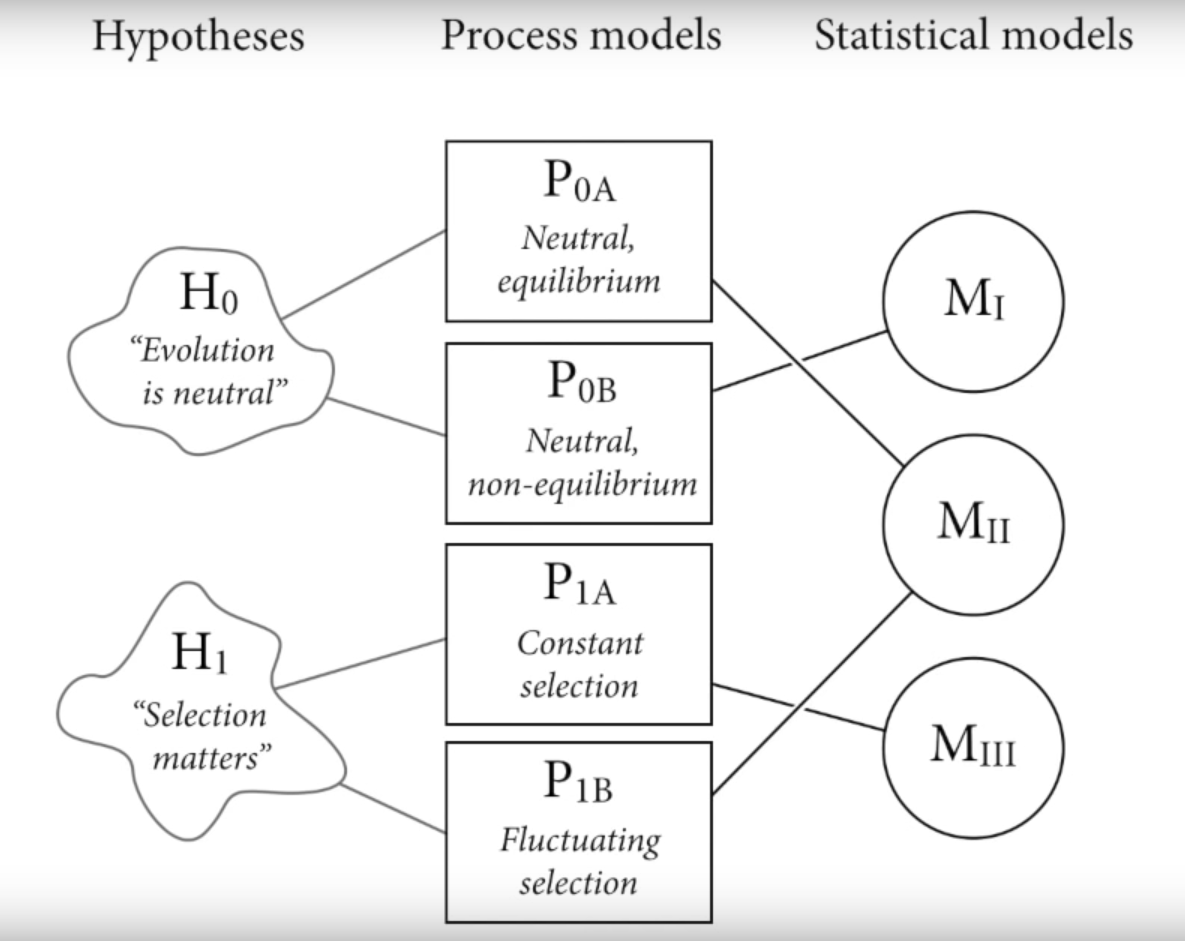10 Lecture 01 - 2019
10.0.2 Approach
A framework for developing + using statistical golems
- Bayesian data analysis
- uses probability to describe uncertainty
- “count all the ways data can happen, according to assumptions and the assumptions with more ways consistent with the data are more plausible”
- Multilevel models
- Models within models
- Avoids averaging
- …
- Model comparison
- Compare meaningful (not null) models
- Caution: over fitting
10.1 Hypotheses - Process Models - Statistical Models
Any statistical model M can correspond to multiple process models
Any hypothesis H may correspond to multiple process models
Any statistical model may correspond to multiple hypothesis

10.2 Small world / large world
Small world: models have assumptions, Bayesian models fit optimally
Large world: real world, no guarantee of optimality
10.3 Example: four marbles
Setup
4 marbles, either black or white, with replacement
Possibilities (5) therefore: WWWW, BWWW, BBWW, BBBW, BBBB
Observation: BWB
Calculate
Given 3 observations, there are 4 choices, for a total of 64 possibilities
Given we observed both a white and a black marble, possibilities WWWW and BBBB are not valid
At each branch, there are 3 possibilities it can be white and 1 possibility it can be black
Bayesian is additive, at each branch just sum the possibility
BWWW: 3 = 1 * 3 * 1
BBWW: 8 = 2 * 2 * 2
BBBW: 9 = 3 * 1 * 3
Using new information
New information is directly integrated into the old information, therefore just multiply it through
So if we take another measure of B, multiply the property through
BWWW: 3 * 1 = 3
BBWW: 8 * 2 = 16
BBBW: 9 * 3 = 27
Using other information
Factory says B measures are rare, but minimum of 1 per bag
Factory infoWWWW 0 since we observed a B
BWWW: 3
BBWW: 2
BBBW: 1
BBBB 0 since we observed a W
Multiply it through
BWWW: 3 * 3 = 9
BBWW: 16 * 2 = 32
BBBW: 1 * 27 = 27
Counts get huge - therefore we normalize them giving us probabilities (0-1)
Probability theory is just normalized counting